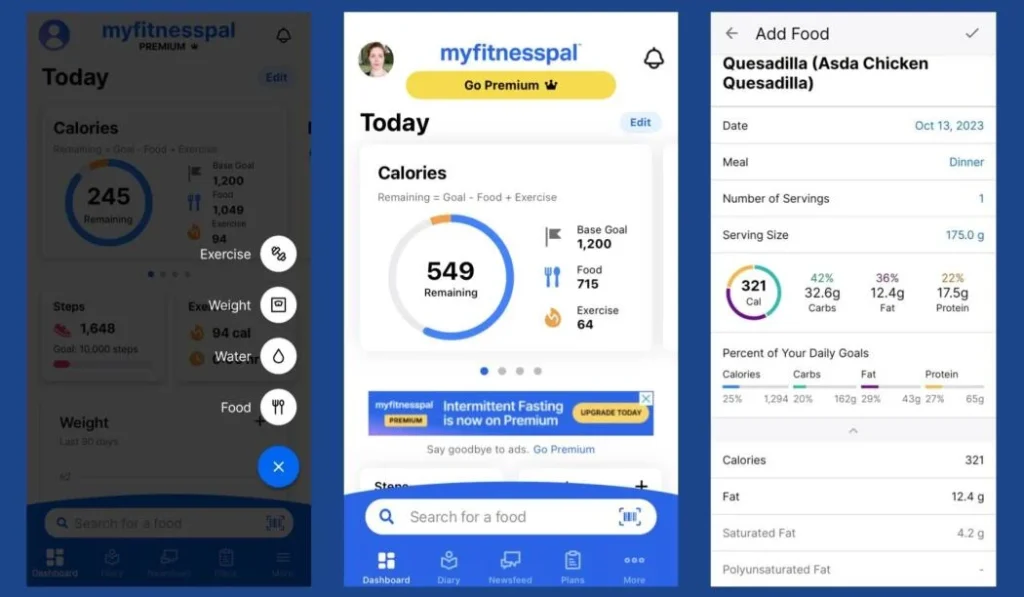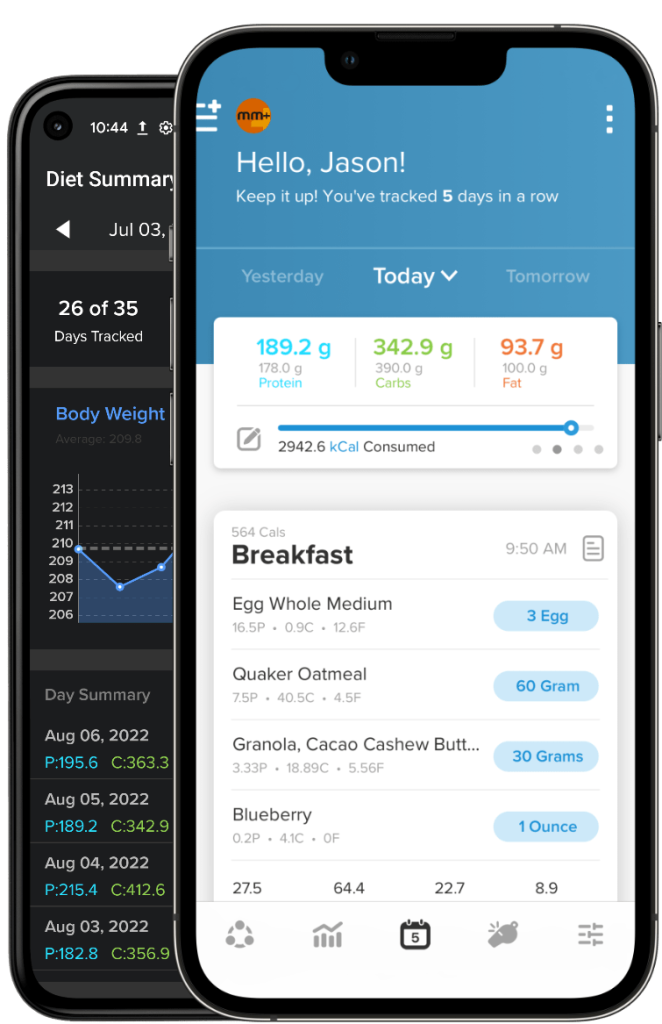Diet and Nutrition App Development – A Complete Guide In 2024

In recent years, there has been a significant surge in the trend of health-conscious eating. Health and sports enthusiasts began actively seeking ways to cultivate good dietary habits. And, let’s be honest here: dusty stickers in the corner of your monitor reminding you about water intake or sugar reduction usually stopped working after a few days (at least it was the author’s pathetic experience). The market was waiting for modern tools that offered convenience and accessibility. Such escalating interest created a substantial demand, prompting businesses to explore opportunities in the mHealth sector.
Nowadays, diet and nutrition apps remain popular due to several key reasons. Firstly, the increasing awareness of the importance of maintaining a healthy lifestyle has spurred individuals to adopt better habits. Secondly, the rise in chronic health conditions related to poor diet choices has emphasized the need for personalized dietary guidance, which these apps can provide. Additionally, the trend towards digitalization and the widespread use of smartphones have made it more convenient for people to engage with such tools regularly. Thus, the nutrition apps market still offers lots of business opportunities for investors and developers. Numbers also speak for themselves as this market worldwide is projected to reach a revenue of US$5.40bn in 2024.


So, if you’re thinking about stepping into the world of diet and nutrition tracking app development, you’ve come to the right place! Our detailed guide aims to dive into the realm of diet applications covering aspects like their types, essential features, potential revenue sources and more!
What are diet and nutrition applications?

Diet and nutrition tracking mobile app development refers to the process of creating tools designed to assist wellness enthusiasts in managing their dietary habits. Incorporating such applications into daily routine can be a game-changer on the journey to better health, wether individuals are aiming to:
- lose weight
- gain muscle or improve athletic performance
- manage specific health conditions
- optimize daily eating habits.
Who uses diet and nutrition apps?
Users here span a broad spectrum of demographics, encompassing individuals from various age groups and backgrounds. Millennials and Generation Z, known for their tech-savvy nature and emphasis on holistic wellness, form a significant portion of the customer base. Young professionals seeking ways to balance work, health, and personal life often turn to these solutions for guidance in maintaining a healthy lifestyle. In general, we can divide target audience into several main groups:
Health and Fitness Enthusiasts. They are dedicated to optimizing their nutrition for athletic performance, muscle gain, or weight management. Athletes and bodybuilders leverage these applications to fine-tune their diets, track macros, and stay accountable to their goals.
Individuals with Specific Health Conditions. They may have diabetes, hypertension, specific allergies, or gastrointestinal disorders. They rely on such applications to manage dietary restrictions, track symptoms, and ensure they are consuming the right nutrients.
Weight Management and Lifestyle Improvers. By using such applications, they monitor caloric intake, set weight loss goals, and receive motivational support to stay on track with their changes.
Types of diet and nutrition apps
If you consider investing in nutrition app development, you have several promising options:
Calorie Tracking
These applications allow users to log daily food consumption, track calorie intake, and monitor nutritional values. To help individuals maintain a balanced diet effectively, these apps usually offer:
- extensive food databases
- barcode scanning capabilities
- personalized calorie goals etc.
MyFitnessPal offers a comprehensive platform to log food intake and track calories.

Meal Planning
These applications streamline the process of creating weekly meal schedules and preparing nutritious meals. To help people make meal preparation more efficient and enjoyable, these apps also let them browse recipes and automate grocery deliveries.
Mealime is known for its customizable meal plans, diverse recipe options, and automatic grocery list generation.

Macro Tracking
These applications focus on monitoring macronutrients (carbohydrates, proteins, and fats) in addition to overall calorie intake. With their help, fitness enthusiasts and athletes can:
- set specific macronutrient ratios
- track macros consumed per meal
- adjust nutrient intake to align with performance or weight management goals.
Advanced features may include micronutrient tracking and meal timing optimization.
My Macros+ is known for its precise tracking functionality, customizable macro goals, and detailed food database.

Water Intake Reminders
These tools help maintain proper hydration levels throughout the day by:
- sending personalized notifications
- tracking daily water consumption
- offering hydration tips to encourage individuals to drink an adequate amount of water based on body weight, activity level, environmental factors.
WaterMinder is known for its customizable hydration goals and regular reminders. Thanks to visual tracking of water consumption, users can see if they meet their daily hydration targets.

Specialized Diets
Specialized diet apps cater to individuals following specific dietary regimens (keto, paleo, gluten-free, low FODMAP diets). Depending on the requirements of each diet, these applications usually provide:
- curated recipes
- meal plans
- shopping guides etc.
Paleo Leap simplifies the adherence to a paleo lifestyle. It offers access to flavorful recipes and practical tips for embracing a whole foods-based approach to eating.

How to build a diet and nutrition mobile app
Here are essential steps to guide you through the diet and nutrition app development process:
Conduct Market Research
Before diving into diet planner app development, identify the target audience and analyze competitors in this niche. Analyze demographics, existing pain points, and emerging trends to tailor your future solution to meet market demands.
Find Unique Selling Proposition
Differentiate your product by defining a USP that sets it apart from existing ones. Whether it’s a personalized and unique meal planning feature or headache-free integration with wearables, clearly articulate what makes your solution worth downloading.
Define The Functionality
Besides an intuitive interface, think about essential features. These may include food logging, macro-nutrient breakdown etc. Integrate your product with nutritional databases, such as USDA food database or custom APIs. Implement data tracking capabilities to synchronize with wearables like Fitbit, Apple Watch, or Google Fit.
Ensure Compliance with Regulations
Prioritize user privacy and data security by adhering to regulations like GDPR and HIPAA if handling sensitive health info. Plus, implement robust security measures to safeguard user data.
Launch and Promote Your App
Create a compelling app store listing, optimize keywords for search visibility. Consider collaborations with influencers, health professionals, and fitness experts to drive user acquisition.
Key Features of Diet and Nutrition Apps

How to monetize a diet and nutrition app?
So, we know how to create a diet app that attracts attention and brings value. It’s time to think about an effective monetization strategy too. Depending on the app’s type, developers usually choose among the following options:
Subscription Model
Offer access to premium features such as personalized meal plans, exclusive content, and ad-free experiences in exchange for a recurring subscription fee. Provide different tiers (e.g., monthly, quarterly, yearly) to cater to varying budgets.
In-App Purchases
Let users unlock additional functionalities or premium content! Offer them the ability to purchase recipe bundles, meal plans curated by nutritionists, workout guides, or coaching sessions. Provide clear value propositions for each purchase.

Affiliate Marketing
Partner with brands, food suppliers or wellness companies. Promote affiliate products, supplements, kitchen gadgets, or workout gear to potential customers through dedicated sections, articles, or recommendations. Earn commissions for every successful referral or purchase, creating a passive revenue stream.
Ad Revenue
Display targeted ads from wellness brands, fitness influencers, or food manufacturers. Utilize ad networks like Google AdMob, Facebook Audience Network, or native advertising platforms to serve relevant ads. Implement non-intrusive ad placements within the interface.
Useful technology tools to build your diet and nutrition app

Things to avoid if you want to make a diet plan app
- Steer clear of overly restrictive diets or extreme weight loss methods that may promote unhealthy habits.
- Refrain from overlooking the significance of accurate nutritional info and transparent data sources.
- Avoid making unrealistic promises or guarantees regarding rapid weight loss results, as sustainable progress takes time.
- Avoid overloading your audience with excessive notifications or reminders, as this leads to demotivation, fatigue and decreased engagement.
Cost to develop a diet and nutrition tracking app

The diet tracker app development cost varies significantly depending on the region where the process takes place. America is known for its robust tech industry and high-quality standards. However, this comes at a price: diet nutrition app development in America may be quite expensive. This is due to higher labor costs, infrastructure expenses, and overall living standards. Thus, the average total cost here ranges from $100,000 to $500,000.
Eastern Europe has emerged as a favorable destination for outsourcing diet nutrition tracking app development, offering a winning combination of quality and affordability. Countries like Ukraine, Poland, and Romania provide top-notch services at competitive rates. The average cost of developing a diet and nutrition tracking app in Eastern Europe ranges from $30,000 to $100,000, making it a cost-effective option without compromising on quality.
Conclusion
The diet and nutrition app development is a multifaceted and complex process, and partnering with a seasoned agency here really makes all the difference. Ein-des-ein specializes in creating bespoke solutions for this industry. By leveraging our expertise and innovative approach, we can transform your vision into a reality that delights audience, drives positive health outcomes and brings expected ROIs!
FAQ
-
What are the features for a nutrition app?
-
These typically include:
1) a food database with accurate nutritional info;
2) access to recipes which adds an extra layer of engagement;
3) insights into nutritional intake through visualization;
4) suggested meals, exercise routines, or supplements; -
How does a diet and nutrition tracking app work?
- In general, people log their food intake i.e. meals/snacks consumed throughout the day. They input or scan food items to record nutritional info: calories, macronutrients, vitamins. The app then compiles data to provide individuals with insights into eating habits. When it comes to on demand dietitian app development, apps may also offer online consultations with specialists.
-
How long does it take to make a nutrition app?
- The timing may vary based on factors such as complexity or team expertise. On average, creating a standard option may take anywhere from 4 to 12 months. It’s advised to consult with an agency to get an estimation for your case.
-
Does Ein-des-ein create other types of products for the healthcare sector?
-
Absolutely! Our company creates various types of software for hospitals, private clinics, pharmacies and other healthcare facilities. These may include:
- Telemedicine tools
- Appointment scheduling Systems
- AI-based Medical Imaging Software and more!
For example, we created a complex EHR system for a medical organization. Here, we implemented a robust patient records management feature to store and update medical histories. Additionally, we integrated a comprehensive appointment scheduling system to manage patient visits. Moreover, we built a medication management module to track prescriptions and dosages.
We also incorporated a billing and invoicing component. It helped streamline daily financial transactions. We also included a lab results tracking tool for monitoring test outcomes. Our team enhanced data security with role-based access controls and encryption protocols.
EDE team also undertook the creation of a complex medical billing platform for a healthcare organization. Initially, we researched industry standards and compliance regulations to ensure accuracy in billing practices. Then we integrated a secure payment gateway to enable electronic transactions and facilitate timely payments. Additionally, we implemented a claims management system to track and process insurance claims. Moreover, we developed a reimbursement tracking feature to monitor payments from payers and identify any discrepancies.